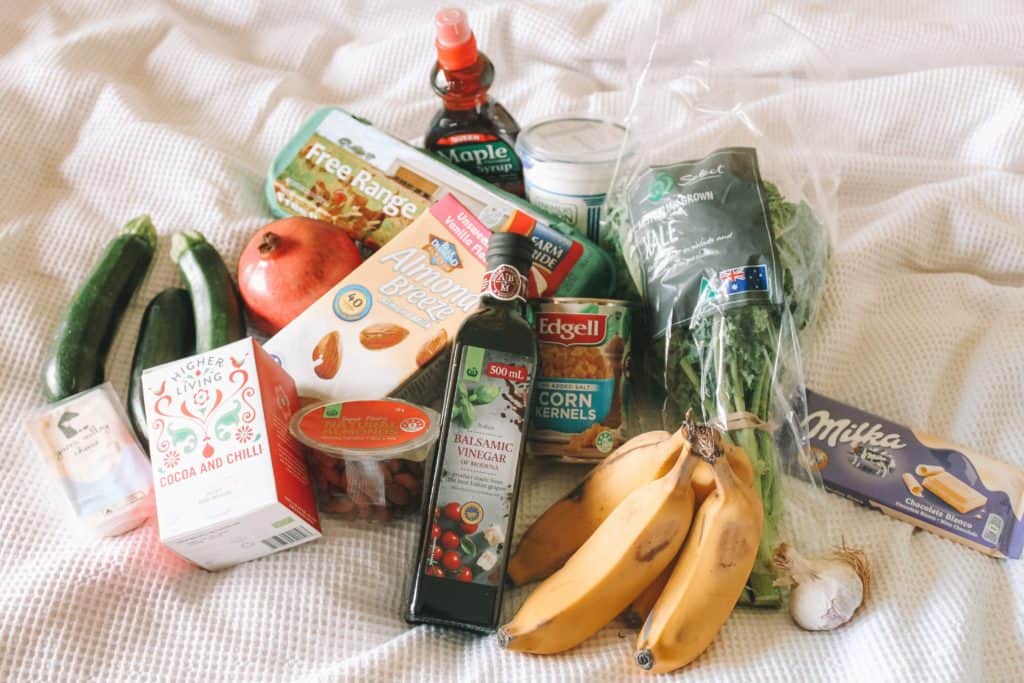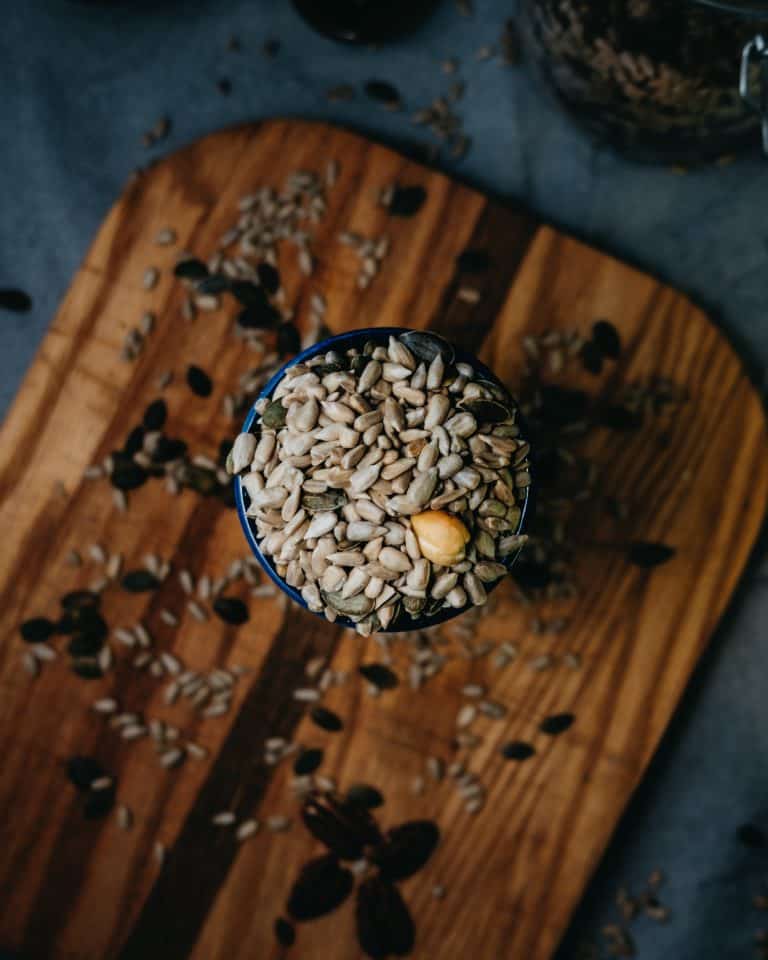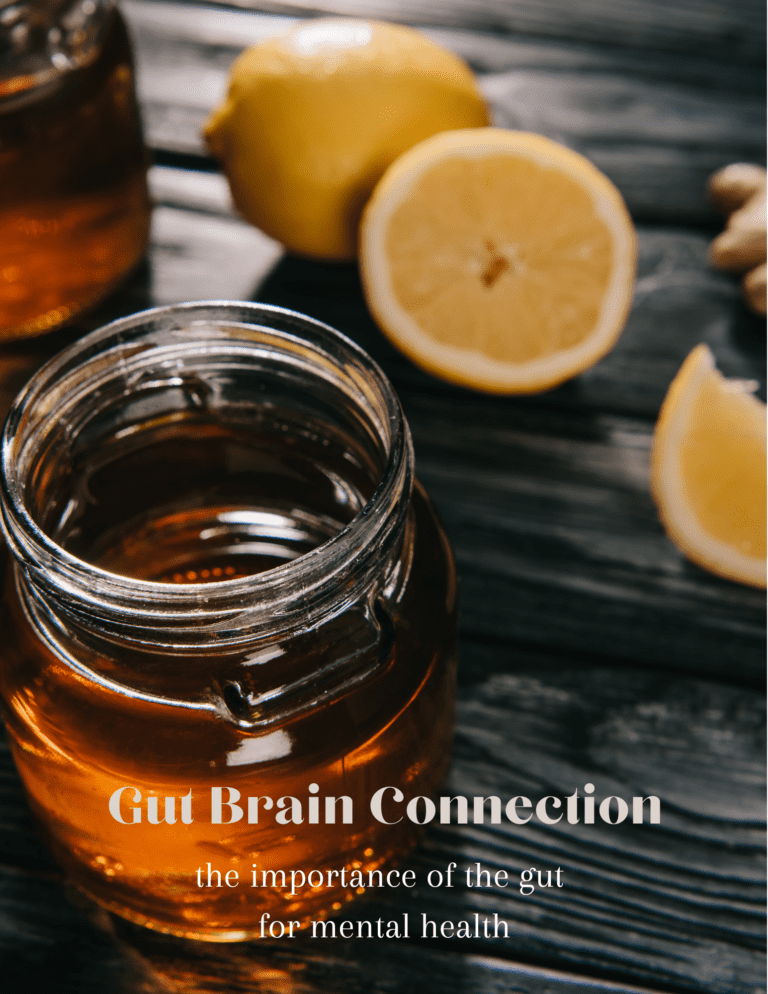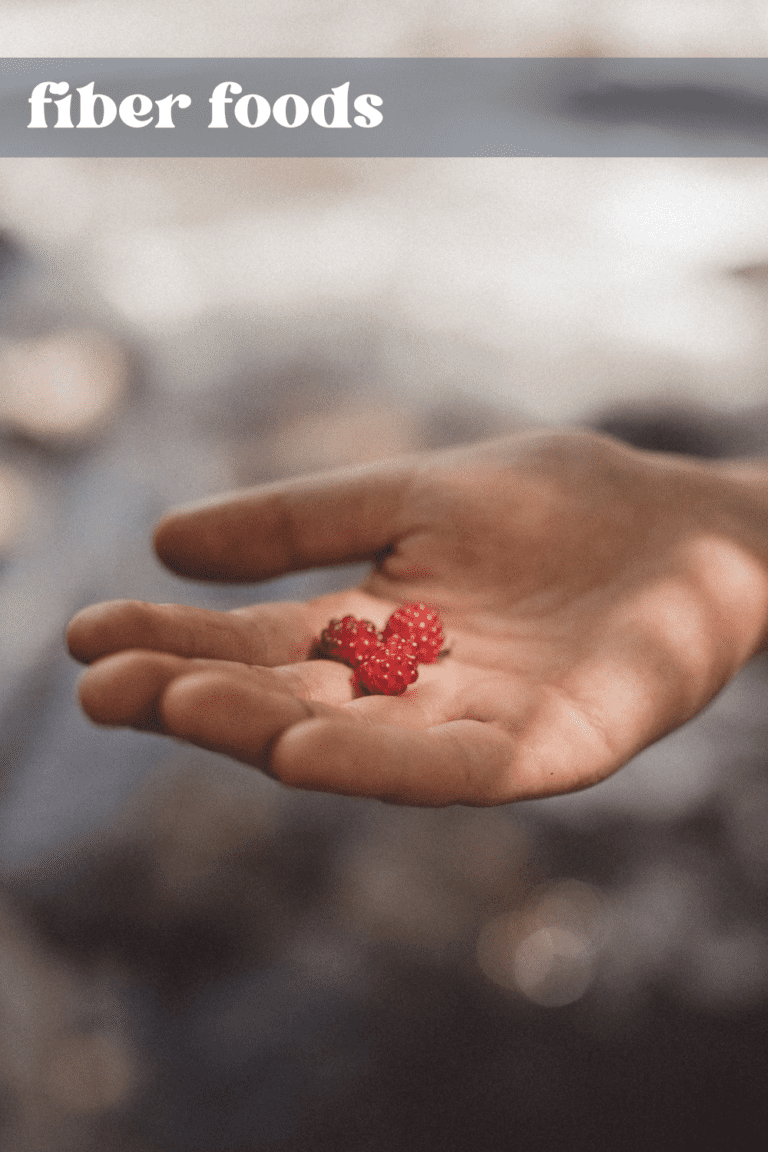There are some things at the grocery store that I just stay away from. Pretty much a few entire aisles, but here are 5 foods that I almost NEVER buy at the grocery store.

Now let me say this first; while I do believe that no foods are “off limits”, there are a few food items that I just won’t typically buy while in the grocery store, WITH SOME EXCEPTIONS. I will discuss those in this post.
Grocery stores can be confusing. It seems as though every product on the shelf is promoting some sort of “health” related marketing on the label. It can be hard to distinguish what is reliable information and what is not. However, despite the many “health claims”, there are five consistent items that I almost never buy and actively avoid.
If I do buy these items, it is sparingly and with a purpose.
Canned goods
Okay, before we get all crazy here, there are some exceptions to this one!!
Outside of tomatoes for tomato sauce and canned beans, I almost never buy any canned items; specifically canned vegetables and fruits. This is due to the high sodium content that is typically found in canned goods. Almost everything is a can is high in sodium because sodium is used as a preservative to maintain freshness. Canned goods are meant to have a long shelf life and therefore need a stable preservative to keep them from going bad.
Typically, when I buy canned goods, it will usually be tomatoes for a sauce or soup on occasion if I’m feeling a craving/just don’t have the time to make my own. As far as canned beans, I typically will buy them canned because it saves a LOT of preparation time that way; otherwise you would need to soak your beans overnight in water and, most of the time, I need all the extra minutes I can get. Luckily, you can usually rinse your beans under cold water and that will rinse off a lot of the sodium! Always rinse those beans!!
As far as cost. I know that some people gravitate toward canned products because of cost and shelf life; however, a great alternative to canned vegetables is frozen. Frozen vegetables last a long time and are naturally preserved through the freezing process, without sodium added. With that being said, any +++++++ of frozen vegetable “in a sauce” is going to have a higher sodium content so just be mindful of that. Try to stick to vegetables that are not flavor enhanced. You can add your own flavor.
As far as fruits are concerned; I never buy canned fruits, but I know that some mom’s rely on them for their little ones at school. If buying canned fruits, just look for the ones in 100% juice and not corn syrup or added sugars.
[RELATED POST: Healthy Pad Thai]
Frozen dinners/meals (even healthy ones)
Another culprit of high sodium content. I avoid frozen dinners or meals unless I’m really in a pinch. If I do buy them, I try to stick to a rule of <300-400 mg of sodium for the meal.
If you don’t know, sodium is one of the most prevalent minerals in our diet. Most Americans are eating way more than recommended on a daily basis. The average American diet is full of sodium and that way of life is spreading to other countries as well as we get more processed and packaged products. In order to avoid an overabundance of sodium I tend to stick to a simple, but effective, rule of thumb.
The rule of 300’s is usually pretty easy to follow. Stick to a sodium content of <300 mg when possible per meal or snack.
Sauces & Condiments
Yet ANOTHER high sodium and added sugar item that I try to limit. I have a select few that I will always have on hand. Sriracha, some dressings, and barbeque sauce, but I rarely use condiments unless I need to. Condiments are usually higher in sodium and sugar and can add a lot of calories to a meal if we aren’t mindful of the amount.
The typical serving size for condiments is 2 tbsp, which isn’t all that much when you pay attention! If you are on any sort of weight management or weight loss program, make sure to be mindful of the sauces and condiments added.
A quick tip when choosing dressings is that most OIL based dressings are typically the better option. Creamy dressings, like ranch and caesar, are a lot more calorie-dense.
[RELATED POST: Health Cinnamon Roll Oatmeal Bars]
White bread, oatmeal bread, potato bread, etc.
Bread can be a tricky item. I often stand in the bread aisle for a good 10 minutes (not exaggerating this!). Most brands label their bread to make you think that it’s “healthy” or full of nutrients. I will only usually buy 100% Whole Grain bread, which means that the grain of the wheat is whole and not broken down or manipulated. You get all the nutrients and fiber of the grain that is usually stripped during the processing of any other type of bread.
“Whole wheat white”, “oatmeal”, “stone ground wheat”, “potato” bread all sound pretty healthy, but you really need to take a look at the fiber content of the bread to get a good idea of what kind you are getting. Or look for “100% Whole Grain” on the label. Typically, the fiber content can give you a good idea of the type of grain that’s used.
It can be hard to find, but I try to find bread with >5 grams of fiber per slice! (hence why I spend so much time in the dang bread aisle).
Highly processed Foods
A lot of food in the grocery store is processed these days for convenience. We can’t really escape that. However, there is a difference between “processed” and “HIGHLY processed” foods.
Some more common processed foods include things like:
- Crackers
- Condiments/sauces
- Cookies
- Yogurts
- Prepared items
- Microwavable items
- Spreads
The list can go on, but you get the picture. Basically, anything in a container is likely to be processed in some way! When navigating processed foods, I usually will look at the ingredient panel. If I can understand the ingredients and the list is not a mile long, then I’m okay with purchasing processed foods. Another thing you can look for is the expiration date. Is it an unreasonably far expiration? Take bread for example; it is meant to be eaten relatively quickly. If you find that your bread has been in the cabinet for 3 weeks without an ounce of mold, then maybe it’s been processed more than you think.
In this world, you cannot escape processing and not all processing is bad, but there are some items that are highly processed. Those are typically pre-packaged foods. I’m not talking about the ones from the grocery store themselves that are from the hot bar. I’m talking about “healthy choice”, “hungry man”, “lean cuisine”, frozen vegetables covered in sauces, microwaveable macaroni and cheese, etc.
What to look for:
That’s not to say these highly processed items are necessarily bad, but should be consumed in moderation. Some of the things I look for when looking at processed items:
- Is my yogurt flavored with a lot of added sugars?
- Do my crackers have a ton of extra ingredients to preserve them or things I can’t pronounce?
- Is there a lot of sodium in this item? (800+ mg)
- Does this have an unreasonably long shelf life/expiration date?
Basically, to sum it all up, if you’re taking a look at the sodium content and the ingredients aren’t a mile long, then you’re in good shape!
This post gave you a good insight on what and why I will avoid certain food items at the grocery store to help you make better choices when doing your own grocery shopping! Hopefully you learned a few tips and tricks along the way!
OTHER POSTS YOU MIGHT LIKE:
What are added sugars? and why are they “bad”?



